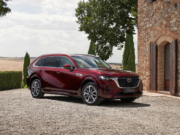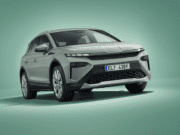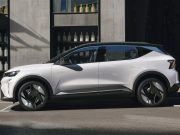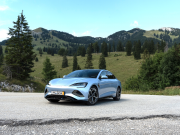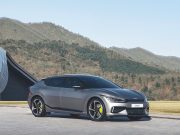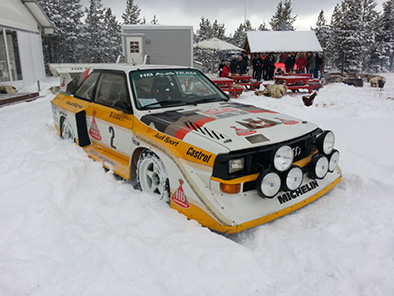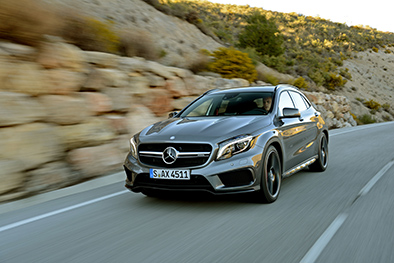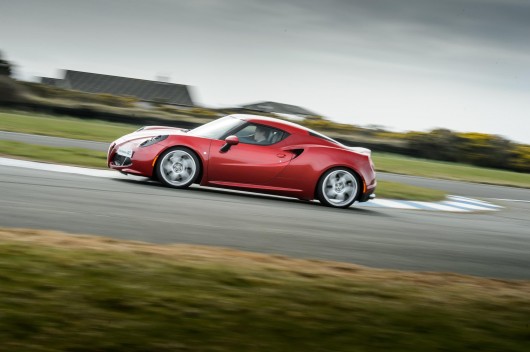
Alfa Romeo has produced a truly magnificent looking sports car, with the arrival of this 4C. It’s stunning to admire from all angles and can easily be mistaken for another Italian supercar that costs more than double its price. There’s more to the 4C’s looks, beneath its skin is a one-piece carbon-fibre monocoque that forms the main structure of the car. The advantage of using this method of construction is the weight saving and strength it offers, the car’s monocoque weighs just 65 kilograms.
You sit low, close to the ground inside the 4C’s minimalist cabin, there’s enough storage for your mobile phone and wallet and that’s about all. The exposed sections of the carbon-fibre tub remind you that you’re seated in something rather special. A TFT multi-function display screen replaces the traditional driver instrument binnacle, it provides key information in a similar format to a race car’s dash. The centre console houses the push-button gear selector and traditional twist knobs for the heating controls. The stereo and air-conditioning are a no-cost extra as some owners may only use their 4C for track days, the stereo itself is made pretty much redundant once you fire up the all-aluminium engine, nestled behind the twin bucket lightweight race seats.
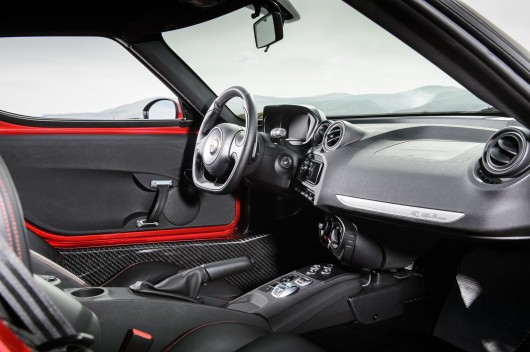

Once the engine fires into life your aural senses are treated to a rather vibrant noise that changes note frequently as you drive. On acceleration there’s a whoosh from the intake and a whistle from the wastegate on lift-off. The drama from the engine’s soundtrack is equally matched with the blistering performance it delivers. The 1.8-litre turbocharged petrol engine produces 240hp and 350Nm of torque, these aren’t headline-grabbing performance statistics until you consider the 4C weighs just 895 kilograms. From a standstill it can accelerate to 100km/h in a mere 4.5 seconds, before going on to a top speed of 257km/h. The engine is mated to a six-speed TCT transmission that enables you to drive the car in full automatic mode or our preferred manual form. Changing gears is performed using the paddles behind the flat-bottomed steering wheel. You can choose from four driving modes, each one alters the power and torque delivery, throttle response, transmission mapping and the driver’s display. These drive modes are, all weather, natural, dynamic and race. All weather is geared towards poor wet conditions, natural aimed at city driving and dynamic for twisty sections of road. Race turns up the volume considerably and deactivates the car’s stability and traction control systems. Our test car had the optional racing pack which includes a sports exhaust that adds further drama to the occasion. If you’re going to purchase a car that attracts as much attention as the 4C, you may as well go the full hog and tick the racing pack on the options list. Although the stiffer dampers and larger wheels (18” front and 19” rear) may take their toll on your comfort along Irish country roads.
The 4C feels planted to the road, although it could be somewhat unnerving if you haven’t driven such a raw sports car before. Its direct steering (no power steering) offers pinpoint accuracy combined with constant feedback and weight changes. The stiff suspension and wide wheels can induce some tramline effect at times, it’s a real thrill to drive but caution must be exercised till you get used to the race-car-like experience. Driving the 4C is very much akin to the previous generation supercharged Lotus Exige S, although the 4C’s performance statistics are closer to the current Elise S and Porsche Cayman. The Porsche is far more refined but the driving experience is more involving in both the Alfa and Lotus. To really appreciate the 4C’s splendid chassis and engine configuration you need to take it on track and explore its true potential. We drove around MondelloPark’s National circuit, a technically challenging circuit that’s sure to reveal any car’s strengths or weaknesses.
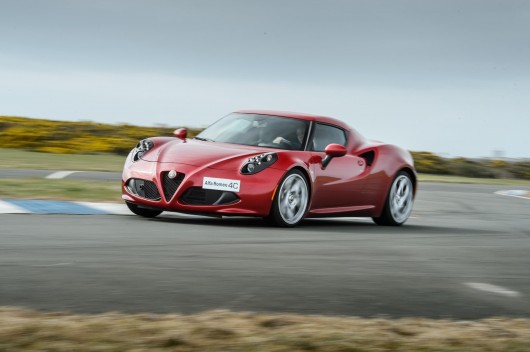

What’s immediately apparent on our first few laps is the lack of body roll, the 4C remains stable through the corners. As we increased the pace in dynamic mode the stability system intervened mid-corner on the fast double-apex turn 3 hampering our corner speed. When you select ‘Race’ mode the stability and traction control systems are switched off, now you can experience the raw power and handling of this track weapon. As you push the car close to the limit it induces understeer at a predictive rate before transferring to oversteer. You need to remain focused and match your throttle and steering inputs to extract a neat lap. Once you master the 4C’s sharp responses it rewards with a true race-car-like driving experience. The engine sings to 6,500 rpm when the rev counter changes to bright yellow indicating it’s time to change up a gear. Down changes are just as pleasing with an auto-blip matching the engine revs to the car’s speed. We put the 4C up against the clock and it set an impressive laptime of 1:04.53 which places it in first position on our laptime chart.
The 4C is not expensive at €69,000 when you consider that the next car constructed with a carbon-fibre tub will cost in excess of €200,000 that is the McLaren 12C. The power to weight ratio enables a keen driver to extract an abundance of driving euphoria, without high running costs in terms of fuel and tax. Even if you never drove the 4C I don’t think you could ever tire from admiring it sitting pretty in your garage, it’s a work of art.
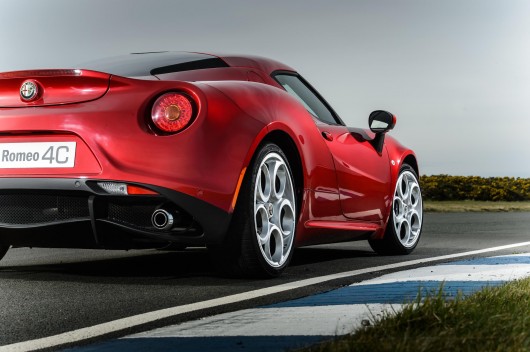

Below is our video driving the Alfa Romeo 4C around Mondello Park’s National Circuit.
[table “204” not found /]





